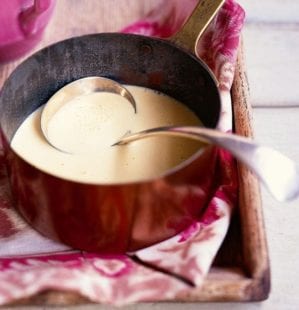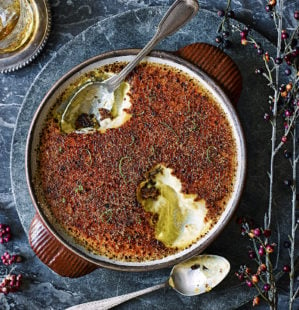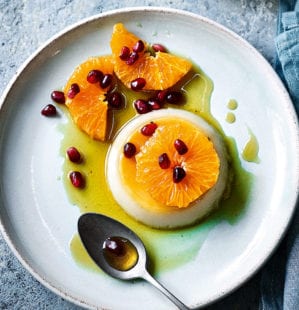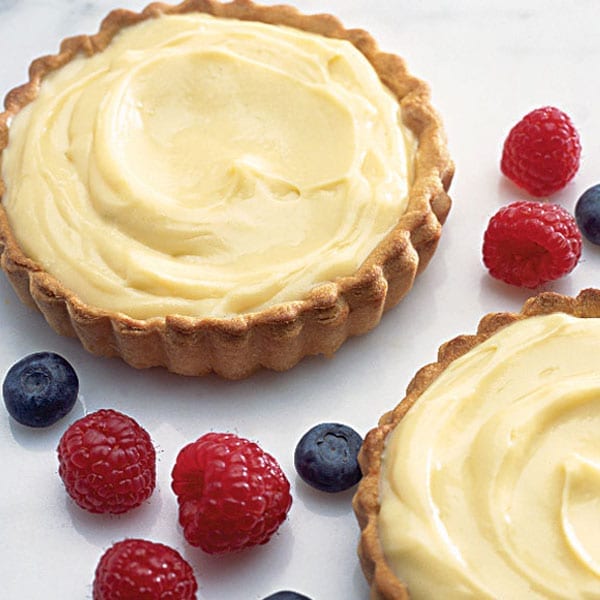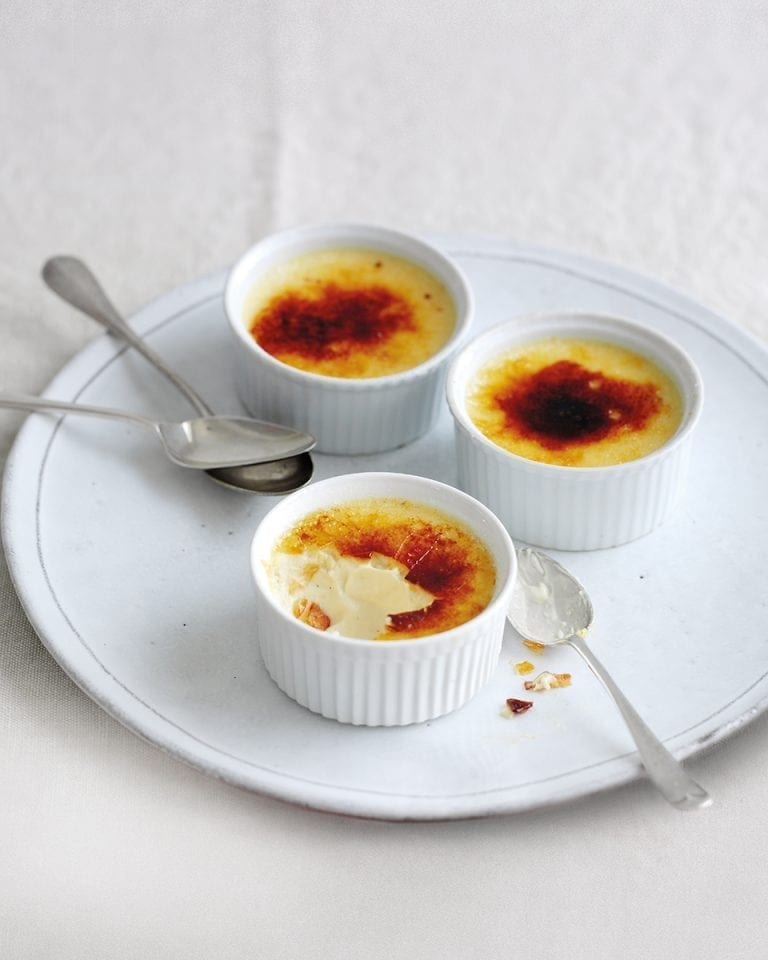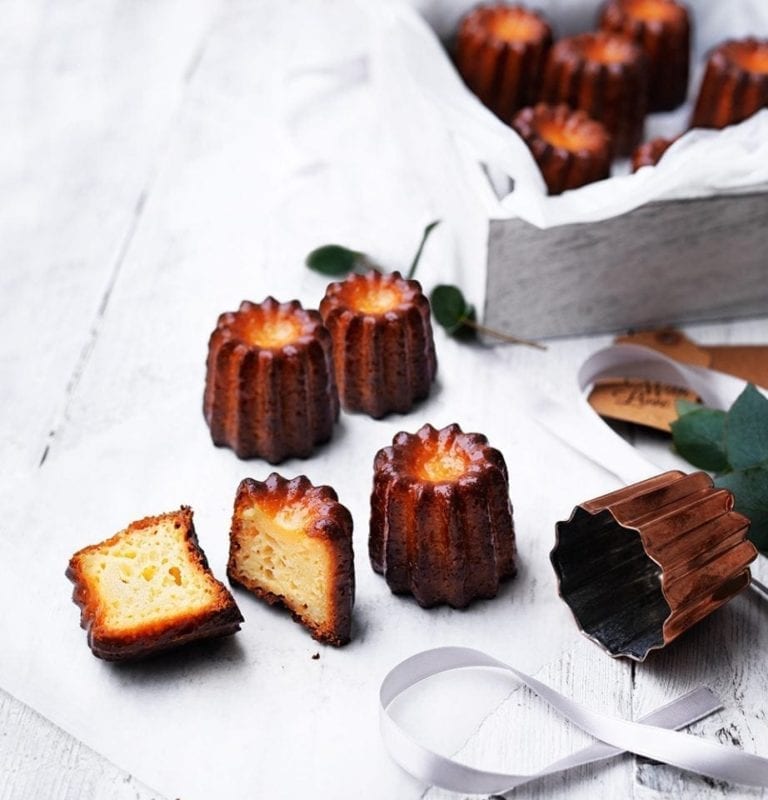Crème de la crème – everything you need to know about custard
Custard is a cornerstone of French cuisine. Usually involving little more than eggs and dairy, the results range from something you can pour with aplomb to jiggly, set creams and countless fillings for all manner of patisserie. Food producer and dedicated custard enthusiast Emily Gussin shows you what to do to elevate your custard game at home and shares four recipes that make the most of its various forms.
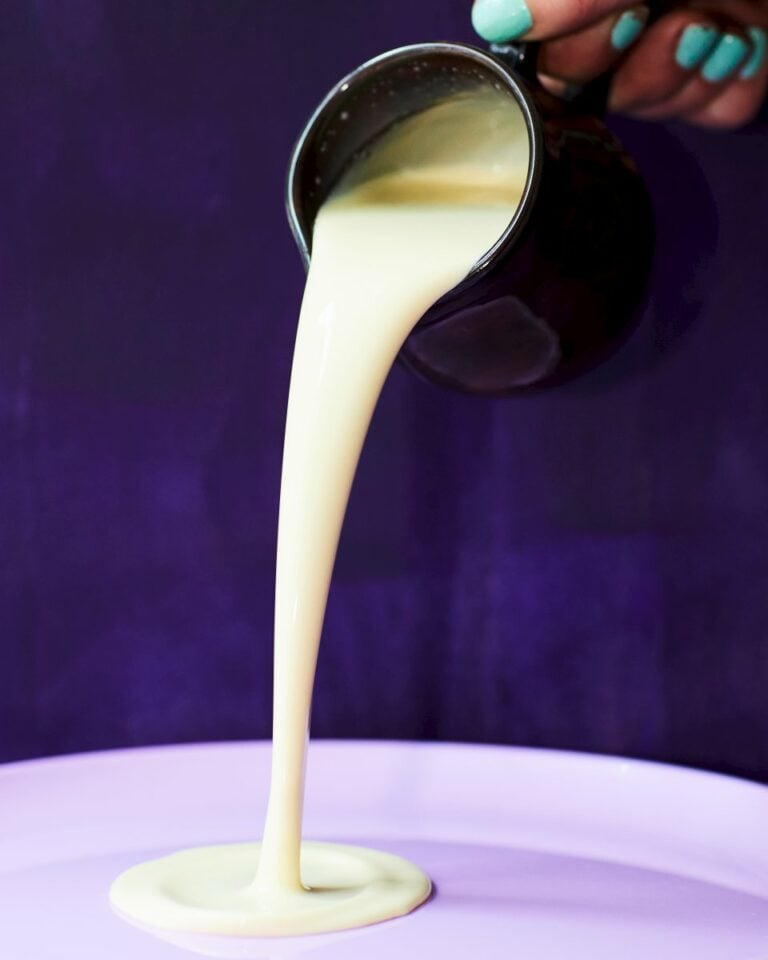
At its core, custard is the result of thickening liquid (usually milk and/or cream) with eggs. But this simplistic breakdown undersells this brilliant and versatile creation. At one time at cookery school, we were making a type of custard every day – an accompaniment to puds, as a filling for pastries and tarts, as a base for chilled or baked desserts and, of course, as the base of ice cream. Although I’m glad my days of daily custard cookery are behind me, I still appreciate what I learned. The rules of making good custard have become second nature and I still enjoy the process of watching a few simple ingredients transform into something smooth and velvety.
Custard: a crash course
Custard’s been popular since the Middle Ages in Europe, a time when baked custard tarts were the height of culinary prowess (the word custard stems from ‘croustade’, the French word for pastry crust). Over time, and in different places, custard started to evolve. The French thought up quiche – my all-time favourite savoury custard – while the Japanese invented chawanmushi, a savoury custard made with dashi broth rather than milk or cream.
What are the different kinds of custard?
Stirred – the kind that is thickened on the hob
Baked – where the thickening takes place in the oven
Steamed – where the custard is set in a container over or in a pan of simmering water
For sweet custard (especially from a French point of view), the easiest distinction is thin vs thick or crème anglaise vs crème pâtissière. This is all about what is added to the egg and milk/cream mixture. Sugar is standard for any sweet custard and vanilla is a definite bonus – would it even be custard without those characteristic vanilla seed flecks? The differentiating ingredient is starch, usually in the form of flour or cornflour. Starch stabilises the custard, coating the egg proteins so you can bring the mixture to the boil and thicken the custard further.
Thin custard (crème anglaise) is for pouring, incorporating into a dessert (think trifle and bread and butter pudding) or even drinking straight from the jug. It can also be set firm with gelatine, baked into a crème caramel or frozen and churned to create ice cream.
Thick custard (crème pâtissière) tends to be used as a filling for treats such as eclairs, doughnuts and tarts – it needs to be thick so it doesn’t run off. Custard can also be taken a step further to lighten or enrich it:
- Crème mousseline has butter added at the end to give an even more velvety finish
- Crème légère has whipped cream folded through to lighten the custard
- Crème diplomat also adds gelatine to make the mixture more stable
- Crème chiboust sees an Italian meringue folded through
Now you’re a clued-up custard connoisseur, here’s how to avoid the pitfalls of making it…
Stick to the ratios
Depending on the sort of custard you want to make, stick to the ratios of egg to liquid. Some cooks do like to make variations such as whether to use whole eggs (more protein), yolks (more richness), milk and/or cream (cream of course being thicker and richer than milk), but it’s best to stick to the recipe. The good thing about ratios is that it’s easy to double up a recipe if you need to make a larger amount.
How to avoid custard curdling
To become custard, eggs and liquid need to be heated – this causes the egg proteins to coagulate and form a thick mass. But heating eggs can easily result in scrambled eggs if you don’t get it right. This’s why tempering is the most common method used to combine the ingredients without any hiccups. The milk and/or cream is heated gently, then very gradually poured into the beaten eggs while whisking, to slowly and gently combine the ingredients without shocking the eggs into a lumpy mess. Once the ingredients have become one, they can be returned to the pan, put in the oven or steamed to thicken up in the heat. Here, again, gentle is the name of the game – custard is always best cooked slowly to help it thicken evenly and stay smooth.
The good news is that the more you make custard, the fear of curdled eggs diminishes rapidly – and the following recipes are foolproof. Mix the warm milk/cream in slowly and the only possible problem with making custard is getting distracted. If you put the pan over a high heat and walk away to do something else, it’ll probably curdle. But if you take your time and pay attention, it’ll become a glossy, rich bowl of goodness. If it does start to split, remove the custard from the heat immediately and use a stick blender to whizz it up and force the ingredients to re-emulsify. Worst case scenario, pass it through a sieve to get rid of any lumps.
Our best custard recipes
Blackberry and crème legère millefeuille
Our September cover recipe is a special one. Delicate crème légère – crème pat that’s been lightened with whipped cream – is the key here and it pairs so well with the deep purple coulis and sweet-sharp blackberries.
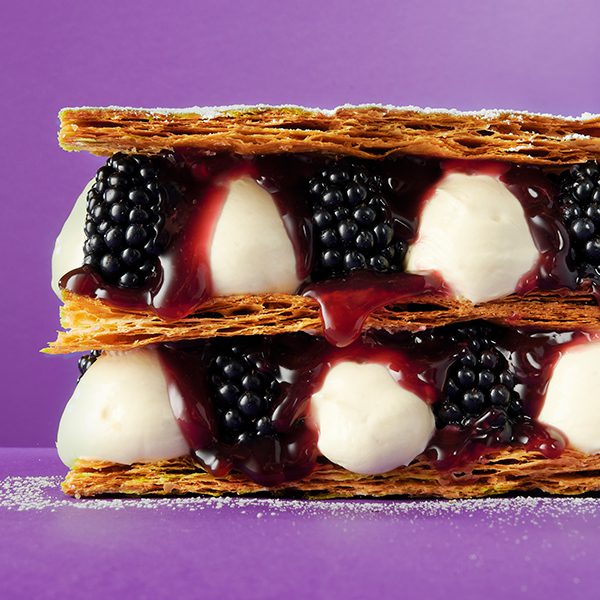
A crème brûlée offers the best of both worlds: the classic crunchy-topped lid and the smooth, spoonable custard. Here, it’s spiced with the warming flavours of chai which results in a gloriously autumnal dessert.
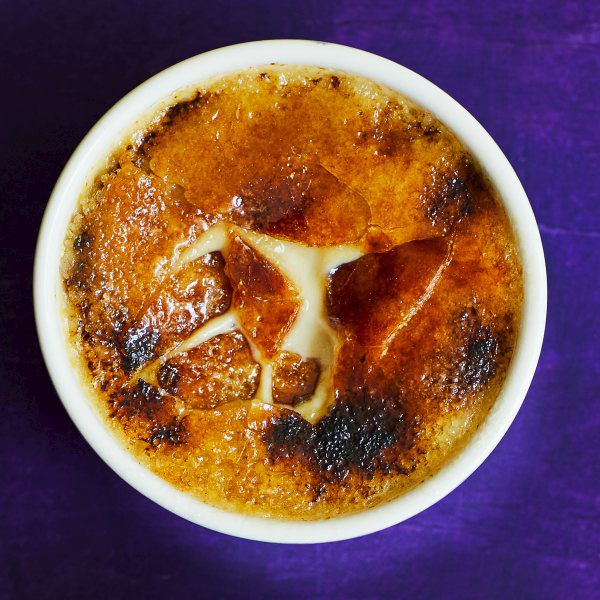
This classic thin custard is much easier to make than you may think. The flavour comes down to the quality of your ingredients though, so opt for eggs with rich, orange yolks. If the custard starts to split, quickly remove it from the heat and tip it into a bowl. Sit the bowl over another bowl filled with iced water and use a hand mixer or stick blender to whizz it. The rapidly reduced temperature and blending will help it emulsify and come back together.
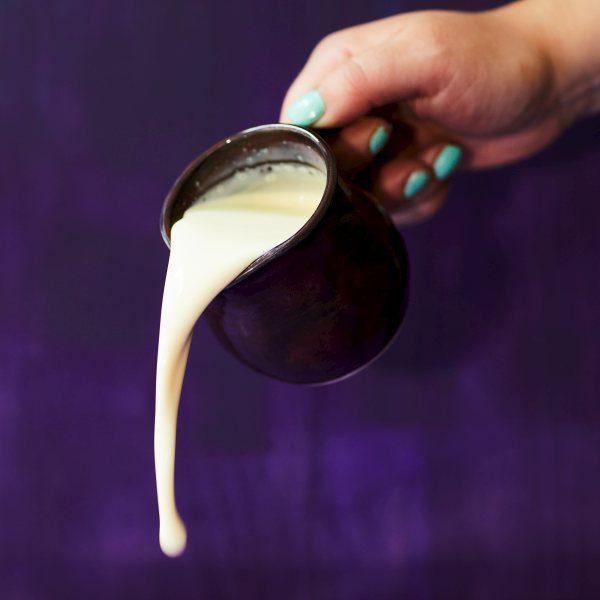
Clafoutis has a creamy custardy texture that’s perfect against juicy, tart fruit. In our deep dish clafoutis we’ve used blackcurrants instead of the classic cherries, and infused the custard with bay for a herbal note, but you can use any berries you like.
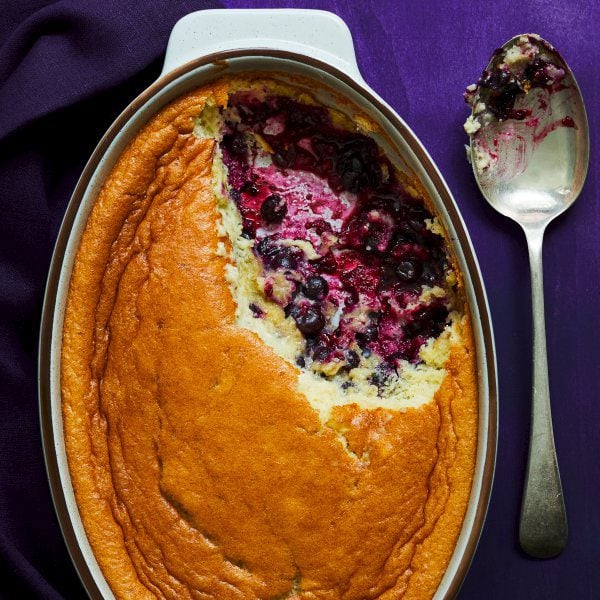
Want yet more custard? In our custard collection you’ll find over 50 recipes.
Subscribe to our magazine
Food stories, skills and tested recipes, straight to your door... Enjoy 5 issues for just £5 with our special introductory offer.
Subscribe
Unleash your inner chef
Looking for inspiration? Receive the latest recipes with our newsletter
